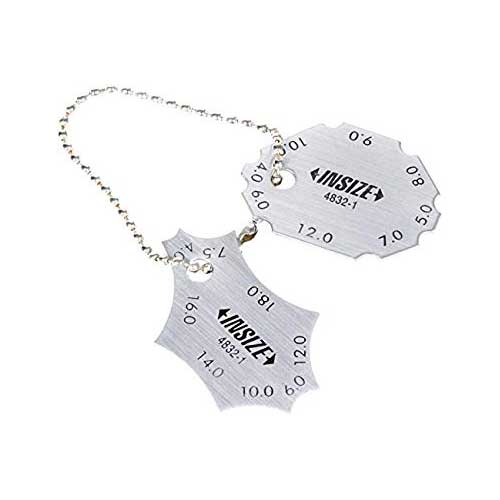Fillet Weld Style Techniques: Maximizing Joint Performance and Visual Appeal for Structural Honesty
In the world of structural design and fabrication, the value of fillet weld style strategies can not be overemphasized. These strategies play a crucial role in not just guaranteeing the efficiency and structural honesty of joints but additionally in enhancing the general visual appeals of the ended up product. By thoroughly taking into consideration factors such as weld account optimization, material choice, joint prep work strategies, welding process effectiveness, and aesthetic enhancement engineers, techniques and makers can accomplish an unified equilibrium between functionality and appearance in their welded frameworks. The blend of these aspects not just causes robust joints but likewise raises the aesthetic charm of the end product.
Weld Account Optimization


Achieving an optimum weld profile involves a thorough consideration of factors such as product thickness, joint arrangement, welding setting, and wanted welding speed. Additionally, the choice of appropriate welding criteria, such as voltage, current, and take a trip speed, is essential in controlling the shape and measurements of the fillet weld. Utilizing sophisticated welding strategies, such as pulse welding or robotic welding, can better improve the weld profile to meet details style demands and top quality requirements.
Essentially, weld profile optimization is an essential facet of fillet weld design that directly affects the total performance and dependability of bonded joints in structural applications.
Product Selection Considerations
When taking into consideration material selection for fillet weld style, the compatibility of the base steels is an essential factor influencing the architectural honesty of the joint. It is necessary to select materials that not only weld with each other effectively however likewise have similar mechanical properties to guarantee the tons is uniformly dispersed in between the base and the weld metals. Welding materials with significantly various properties can bring about problems such as stress concentrations, premature joint failure, or splitting.
Furthermore, the setting in which the welded structure will certainly operate must be taken into consideration when picking products. Variables like rust resistance, temperature changes, and exposure to chemicals can all affect the durability and performance of the weld joint. By choosing products that are ideal for the designated application and atmosphere, the overall resilience and dependability of the welded joint can be significantly boosted.
Consequently, complete factor to consider of material compatibility and ecological aspects is vital in making sure the weld joint's strength, durability, and total structural more info here integrity.

Joint Preparation Techniques
Considering the critical function product selection plays in making certain the structural honesty of fillet weld joints, it is important to implement exact joint prep work techniques that optimize the connection in between the base steels. Joint preparation is a critical step that directly affects the quality and strength of the weld.
Moreover, proper fit-up of the joint is crucial to guarantee consistent circulation of the welding product and prevent problems like insufficient infiltration or excessive accumulation. Beveling the edges of the base steels can develop a groove that permits much deeper weld penetration and a stronger bond. Furthermore, tack welding the elements in place before the last weld aids maintain positioning and lessens distortion throughout the welding procedure. By diligently following these joint preparation methods, welders can improve the general efficiency and appearances of fillet weld joints while ensuring structural stability.
Welding Process Performance
Efficient welding procedures are necessary for attaining optimal efficiency and top quality in fillet weld construction. One crucial element of enhancing welding procedure effectiveness is selecting the proper welding check this site out method. Elements such as product kind, joint layout, and welding setting must be thoroughly considered to establish the most appropriate approach. Processes like gas steel arc welding (GMAW) and flux-cored arc welding (FCAW) are generally utilized for fillet welds due to their versatility and speed.
In addition, guaranteeing correct equipment configuration and upkeep is essential for reliable welding. Regular calibration of welding makers, examination of consumables, and upkeep of soldering iron can protect against downtime and rework, ultimately conserving time and resources. Additionally, utilizing skilled welders with know-how in the details welding process being utilized can substantially affect efficiency. Trained welders are a lot more experienced at adjusting parameters, troubleshooting problems, and preserving constant weld high quality.
Visual Enhancement Approaches
To enhance the high quality of fillet weld construction, carrying out visual improvement methods can play an important duty in guaranteeing accuracy and accuracy during the welding procedure. Visual help such as weld dimension assesses and multiplying lenses can assist in examining weld profiles and measurements accurately. By incorporating these visual enhancement approaches into the welding process, welders can attain not only structurally sound fillet welds yet also aesthetically attractive results that fulfill market standards.

Final Thought
To conclude, enhancing fillet weld design entails see post cautious consideration of weld account, product choice, joint preparation, welding procedure effectiveness, and visual improvement techniques. By implementing these approaches, architectural stability can be improved while additionally accomplishing visual charm. It is important to focus on both performance and aesthetics in fillet weld layout to guarantee the overall high quality and resilience of the joint.
By diligently thinking about factors such as weld profile optimization, material choice, joint prep work methods, welding procedure efficiency, and aesthetic improvement techniques, designers and fabricators can attain a harmonious balance between functionality and appearance in their bonded frameworks.In the world of fillet weld design, enhancing the weld account plays a critical role in making certain structural stability and efficiency. The weld account, which consists of the size and form of the weld cross-section, straight influences the distribution of tension and load-bearing ability within the joint. It is essential to pick products that not just bonded with each other properly but also possess similar mechanical buildings to ensure the load is evenly dispersed between the weld and the base metals - Gauge Fillet Weld.In conclusion, optimizing fillet weld design involves careful consideration of weld account, product selection, joint prep work, welding procedure performance, and visual enhancement methods